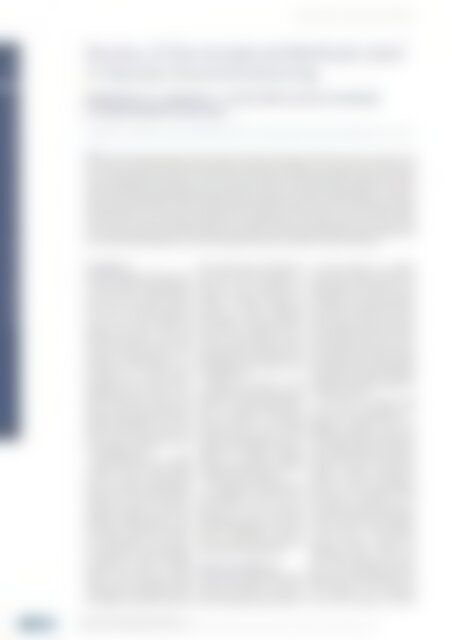atw - International Journal for Nuclear Power | 08/09.2019
Ever since its first issue in 1956, the atw – International Journal for Nuclear Power has been a publisher of specialist articles, background reports, interviews and news about developments and trends from all important sectors of nuclear energy, nuclear technology and the energy industry. Internationally current and competent, the professional journal atw is a valuable source of information. It covers in particular the following topics: Energy policies, economic and legal issues Research and innovation Environment and safety Operation and new construction Decommissioning and waste disposal Fuel
Ever since its first issue in 1956, the atw – International Journal for Nuclear Power has been a publisher of specialist articles, background reports, interviews and news about developments and trends from all important sectors of nuclear energy, nuclear technology and the energy industry. Internationally current and competent, the professional journal atw is a valuable source of information.
It covers in particular the following topics:
Energy policies, economic and legal issues
Research and innovation
Environment and safety
Operation and new construction
Decommissioning and waste disposal
Fuel
You also want an ePaper? Increase the reach of your titles
YUMPU automatically turns print PDFs into web optimized ePapers that Google loves.
<strong>atw</strong> Vol. 64 (2019) | Issue 8/9 ı August/September<br />
400<br />
DECOMMISSIONING AND WASTE MANAGEMENT<br />
Review of the Analytical Methods Used<br />
in <strong>Nuclear</strong> Decommissioning<br />
Application vs. aspiration – an EU-wide survey of methods<br />
in radioanalytical chemistry<br />
Alexandra K. Nothstein, Ursula Hoeppener-Kramar, Laura Aldave de las Heras and Benjamin C. Russell<br />
The wave of decommissioning of nuclear facilities that Europe is facing now and in the near future requires a solid<br />
basis of efficient chemical and radiochemical analytical methods and capabilities. This study presents the results of a<br />
survey among European laboratories to summarize current practices, covering radionuclides, activity levels, sample<br />
types, and analytical instrumentation to create a clearer picture of the present status and future challenges. The results<br />
reflect the particularity of decommissioning, which requires analysis of a wide range of sample matrices. As a result, a<br />
wide variety of radioanalytical methods are deployed. However, gamma spectrometry, liquid scintillation counting and<br />
alpha spectrometry remain by far the dominant analytical methods. Despite the need <strong>for</strong> novel methods <strong>for</strong> specific<br />
nuclides, laboratories did not consider specialization or miniaturization of instruments as a focus <strong>for</strong> future developments.<br />
Rather, two types of challenges emerged most prominently: firstly, process optimization, such as improved and<br />
more integrated communication with customers and regulatory bodies and secondly, methodical improvements, such<br />
as the more widespread application of new technologies and enhanced availability of reference materials.<br />
Introduction<br />
Decommissioning of the first nuclear<br />
reactors is progressing and Europe is<br />
currently facing a decommissioning<br />
wave, which will continue into the<br />
future due to the planned shutdown<br />
of the first and second generation<br />
nuclear power plants (NPPs) and<br />
facilities in the next 5 to 50 years<br />
[ European Commission, 2016]. With<br />
about a third of the EU’s 186 reactors<br />
requiring decommissioning at an<br />
estimated cost of 4 to 5 billon € each,<br />
this adds up to a total of 200 to<br />
300 billion € <strong>for</strong> near future decommissioning<br />
projects within the EU<br />
[OECD, 2016]. Thus, processes that<br />
improve the efficiency of decommissioning,<br />
analytical methods <strong>for</strong> radionuclide<br />
determination, and availability<br />
of Europe-wide standards are<br />
all becoming increasingly relevant<br />
[Judge & Regan, 2017].<br />
Decommissioning is a strongly<br />
regulated process [McIntyre, 2012],<br />
in which a range of radionuclides<br />
must be analyzed using approved<br />
methods that reach specified limits of<br />
detection and accuracy. Decommissioning<br />
also requires a spectrum of<br />
analytical methods because of the<br />
multitude of radionuclides, matrices<br />
and sample preparation procedures,<br />
all of which span a vast range of<br />
activity levels [Hou, 2007]. The choice<br />
of methods <strong>for</strong> each radionuclide<br />
depends on the sample, i.e. sample<br />
matrix, activity level and amount,<br />
which, in turn, is dependent on legal<br />
requirements and regulatory statutes<br />
<strong>for</strong> sampling at nuclear facilities and<br />
power plants during decommissioning.<br />
Detection limits <strong>for</strong> specific nuclides<br />
are then determined by<br />
declaration criteria. Analysis of radionuclides<br />
is there<strong>for</strong>e strongly dependent<br />
on a number of parameters<br />
and requires a variety of analytical<br />
methods [Hou et al. 2016], which, to<br />
some extent is contradictory to the<br />
need <strong>for</strong> a highly efficient, routinebased<br />
approach to radioanalytics with<br />
high-output capacity required to meet<br />
the challenge of the current wave of<br />
decommissioning.<br />
Moreover, an overview of the<br />
analytical methods and the scope with<br />
which they are employed throughout<br />
Europe, is currently lacking. Meanwhile,<br />
standardized measurement<br />
procedures that rely on suitable<br />
reference materials are absent or still<br />
being developed [Larijani et al. 2017].<br />
There<strong>for</strong>e, it is difficult to determine<br />
whether the available analytical<br />
methods are sufficient and valid when<br />
compared with requirements.<br />
To improve the understanding of<br />
current capabilities and future needs<br />
and challenges, a survey was conducted<br />
<strong>for</strong> end users of European<br />
laboratories, as part of the Horizon<br />
2020 INSIDER project. The survey<br />
covered radionuclides measured,<br />
their activity levels, analytical instrumentation<br />
and sample matrices.<br />
Materials and Methods<br />
The survey was composed of open and<br />
closed style questions. A total of 18<br />
questions were posed to the participants.<br />
Ten questions indicated the use<br />
of several options (i.e. multiple<br />
nuclides with multiple analytical options)<br />
and a free text option to cover<br />
all possibilities. The aim was to collect<br />
in<strong>for</strong>mation on the type of laboratories<br />
working on decommissioning, the<br />
sample types analyzed, the activity<br />
levels measured, the sample preparation<br />
techniques utilized, the radionuclides<br />
determined, and the analytical<br />
methods used. The final two open<br />
style questions asked the participants<br />
to provide their view of the future and<br />
in particular the analytical challenges<br />
<strong>for</strong> both their laboratory and decommissioning<br />
in general.<br />
The survey was created using<br />
the online tool SurveyMonkey (ref:<br />
https://www.surveymonkey.com/).<br />
Laboratory managers from the<br />
INSIDER consortium, as well as others<br />
contacted through personal networks,<br />
were initially contacted and asked to<br />
collect European-wide data with the<br />
intention to reach a representative<br />
sample of laboratories working in<br />
the field. A total of approximately<br />
140 persons were contacted, of which<br />
80 agreed to participate. Out of<br />
75 personalized survey links that were<br />
sent out, 34 surveys were completed<br />
from 16 countries (10 from Germany,<br />
5 from France, 2 from Belgium,<br />
Hungary, Romania, Sweden and<br />
Switzerland. Austria, Croatia, Denmark,<br />
Finland, Italy, and one from<br />
each of the Netherlands, Slovakia,<br />
Spain and the United Kingdom). Five<br />
additional surveys were begun, but<br />
not completed. Only completed<br />
surveys were analyzed. The survey<br />
Decommissioning and Waste Management<br />
Review of the Analytical Methods Used in <strong>Nuclear</strong> Decommissioning ı Alexandra K. Nothstein, Ursula Hoeppener-Kramar, Laura Aldave de las Heras and Benjamin C. Russell

















